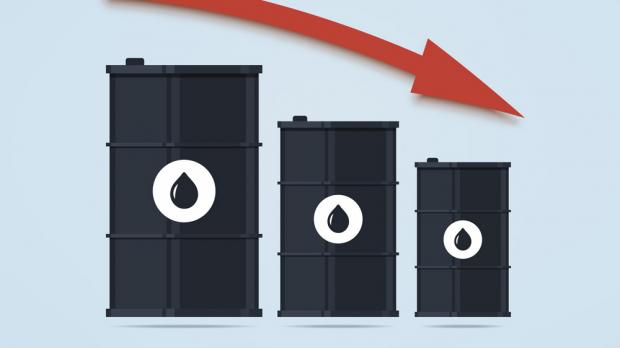On the Market: The Fall of Oil
America’s reliance on oil is deep-seated within our politics. Oil companies employ a large number of Americans—almost 10 million in 2011—and an army of lobbyists on Capitol Hill. In 2015 big oil spent around $100 million dollars on lobbying our government. According to OpenSecrets.org, the oil and gas industries ranks sixth for total lobbying expenditures since 1998.
However, oil prices have recently plummeted to barely $30 per barrel. This is not the first time we’ve witnessed a major drop in oil price and already we are seeing familiar consequences. At the end of 2015, more than a quarter million people lost their jobs. These are similar numbers to the 2001-2004 job loss around San Jose, which saw more than 200,000 people let go in that four-year span. During these times of stagnation and even losses, oil companies are forced to cut their budgets due to high supply and low demand. Payroll is one of the largest costs for a company and one of the first to get slashed. Even without the argument of climate change, our reliance on oil endangers the economy. Until our country diversifies the energy sector, our economy is victim to the cyclical nature of oil prices and will continue to endure the booms and busts until the resource is completely depleted, leaving millions unemployed.
One of the main problems is the power of the oil industry. Priceofoil.com reports that American fossil fuel companies are given more thanr $37 billion annually in subsidies. So our tax dollars are supporting companies that are laying off hundreds of thousands of people. When these companies are at their strongest, they are capable of manipulating the government; energy is not only one of the leading lobbyist industries but also one of the leading campaign donors, to both Democrats and Republicans. The Koch Brothers famously stated before the 2016 campaign season began they would spend $1 billion to ensure their candidate wins the White House. By latching themselves to the nation’s life support, fossil fuels have conquered their competition in the energy sector. There are ongoing attempts to bust the hold fossil fuels have, but these are minor when one looks at the total usage of oil, coal, and natural gas on an annual basis. According to the Institute for Energy Research, fossil fuels dominate most energy uses in the United States, including 95 percent of transportation and 67.2 percent of electric consumption.
The solution is to take this moment of low oil cost and direct it towards renewable energy resources. As the market continues to collapse on itself, we are granted the opportunity to build something new on top of the rubble. Renewable energy offers not only clean fuel but also large-scale, sustainable employment from an infinite resource. Currently we have the work force to pull this off. According to Forbes, though unemployment is down to five percent, the percentage more than doubles when including underemployed Americans. Careerbuilder.com cites over 50 percent of college graduates in 2014 are working jobs that do not require a degree. We have a large, educated work force capable of spearheading the industry.
One of the main obstacles standing in the way of renewable energy is cost.
While the source of the energy itself is free, equipment to capture and direct it costs more than fossil fuels. According to a study by Dr. Amory Lovins of the Economist, building a solar plant, collecting a reservoir of energy, and distributing it, would cost $158,800 per megawatt per year more than coal.[8] Dr. Lovins then goes on to show the net cost of wind energy per megawatt per year is over $30,000 cheaper than coal. While we cannot solely rely on wind to power all our energy needs, these data points prove diversifying our energy sources can be beneficial. By further incorporating various renewable fuels into our energy sector we can reduce our underemployed population, fight massive layoffs from fossil fuel companies, and generate cheaper forms of energy.
This is not a call to end the use of fossil fuels. It is a motion to diversify our overall usage of energy to further create employment. Many oil companies have led us to believe that the more profits they earn, the more people they can employ. They argue this method is the greatest way to boost our economy. While it is true the more they expand the more they can employ, the fact of the matter is if we further diversify our energy sector, we will see more consistent job growth. Rather than relying on a good yield from one resource and suffer the same cycles of booms and busts, we can have a field of different energy foundations to balance each other out and avoid volatile trends.
The information has been obtained from sources considered to be reliable, but we do not guarantee that the foregoing material is accurate or complete. Links are being provided for information purposes only. Raymond James is not affiliated with and does not endorse, authorize or sponsor any of the listed websites or their respective sponsors. Raymond James is not responsible for the content of any website or the collection or use of information regarding any website’s users and/or members
Ari Goldfarb is not affiliated with Raymond James. Views expressed are the opinions of Ari Goldfarb and the Financial Advisors at Goldfarb Financial and not necessarily those of Raymond James. Goldfarb Financial is an independent firm. Securities offered through Raymond James Financial Services, Inc., member FINRA/SIPC. Goldfarb Financial, 295 Main St Suite 914, Buffalo, NY 14203 716-842-0145

